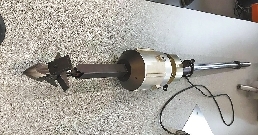
A HARPOON flung from a satellite has successfully captured a piece of pretend space junk, like a whale. The British-led experiment is part of an effort to clean up debris in orbit, hundreds of miles above Earth. The University of Surrey’s Guglielmo Aglietti said Friday the steel-tipped harpoon scored a bull’s-eye a week earlier. The harpoon – no bigger than a pen – pierced an aluminium panel the size of a table tennis racket attached to the end of a satellite boom. The distance was just 1.5 meters, but researchers were delighted. A video shows the harpoon slamming into the target and knocking it off its perch, and then the harpoon cable becoming entangled around the boom. Aglietti said a much bigger harpoon will be needed to snare a real dead satellite. Thousands of old satellite and rocket parts, and other junk, circle Earth, posing a potential threat to working spacecraft, including the International Space Station. The same team used a net to capture a piece of space junk in a test last September, and in December, they tracked a tiny satellite ejected from the mother ship using lasers. “We are very happy because so far, we have done three experiments and all three have been working,” Aglietti said. All that remains is for the 400-km-high satellite to re-enter the atmosphere and burn up. If all goes according to plan, a sail will inflate in March and eventually drag the satellite down, its mission accomplished. Aglietti said the next step for the consortium would be to offer this as a real service and go after real space debris. (SD-Agencies) | 
